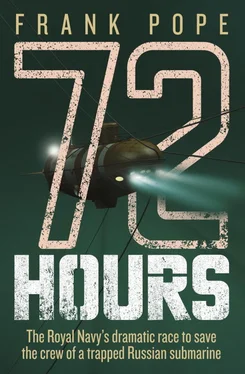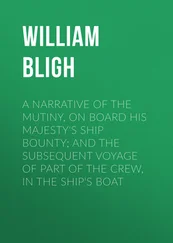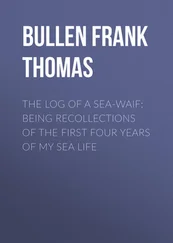But the tone of this call was different from the start. There was no apologising for disturbing him at this time of night; there was simply an instruction to call a guy at Submarine Group 7 on the coast of Japan. He did so, and was told that a Russian craft had become trapped in the western Pacific and that US help had been requested.
Van Horn was out of the door in 15 minutes and in his Toyota Lexus streaking towards Naval Station San Diego on North Island. He was on the phone constantly, making and receiving calls to try to clarify the situation and determine what the US Navy’s response was going to be. It was only when he got the call from SubPac in Hawaii (the US Navy’s Pacific submarine command) that he dialled a code into his phone to initiate a recall of his team. A computer at the base received the code and then sent a pager message out to all of the 130 men in Van Horn’s team. Emergency Recall. Get to DSU immediately , they were told. All were Navy personnel, not subcontracted to a civilian outfit as is the case in the UK, and training runs told him that 80 per cent of them would reach the base within an hour.
The only other time the DSU had been fully mobilised while under his command had been six months previously when the Los Angeles-class nuclear submarine USS San Francisco had smashed into an uncharted seamount south of Guam at full speed. The crew managed to surface and make an emergency call before beginning frantic efforts to discover the extent of the damage. The only things that really mattered were the buoyancy tanks. If they were punctured they’d shortly be sinking back to the seabed.
Van Horn’s crew had assembled rapidly at the DSU, but before they’d been deployed the San Francisco established that the tanks were holding and that she was going to be able to stay on the surface unassisted. His team had been stood down.
Some of the men were already at the base when Van Horn arrived. In the end, 90 per cent would arrive within an hour of the pager message going out, thanks to the clear, night-time roads. On taking the position in December the previous year, Van Horn made it his mission to speed up the deployment of the Deep Submergence Rescue Vehicles. He’d felt the crews weren’t drilled enough on how to load an aircraft rapidly, so he’d been working them hard to change things. He never wanted his team to be the slowest element in a situation, and as a former defence linesman for the Navy American Football squad he knew something of how training speeded up a team.
The Deep Submergence Unit was home to the newly modernised US Submarine Rescue Service, and had a wide-ranging suite of equipment available for different situations. Alongside the Atmospheric Diving Suits – pressure-resistant exoskeletons with life support that were able to take humans to a depth of 300 metres – were two or three different breeds of ROV. The deep-diving rescue submersible Mystic was at the core of the system, and differed from other DSRVs because it could be docked with another submarine, not just a surface-going mothership. That meant rescues were possible when conditions on the surface – weather or geopolitical – were hostile.
Also under Van Horn’s control at North Island’s Deep Submergence Unit was the ‘McCann’ Diving Bell. Essentially an outsized, upturned steel barrel that could be bolted over the submarine’s escape hatch, the device was the brainchild of Charles ‘Swede’ Momsen. Its simplicity was due to the fact that it had been designed more than 70 years before, when it was the first device ever to allow outsiders to rescue sailors trapped inside a submarine. Until that point, the unspoken code of the submariner was that if anything went wrong, you knew you either saved yourself or died with the boat. It took heretical thinking and a healthy disrespect of authority to break that presumption, and these were qualities that Momsen had in spades. Unfortunately, they didn’t endear him to the Naval authorities, who chose to name the bell not after the inventor but after the man who modified it for operational use, Allan Rockwell McCann.
Momsen, whose Scandinavian looks earned him the nickname ‘Swede’, was an insatiably curious engineer, as well as a submarine commander. He’d been in charge of the US Navy’s S-1 – the first of 51 S-class boats built between 1918 and 1925 – when he’d received a Mayday call. The S-1’s sister ship, S-51, had collided with a passenger ship and sunk without trace. Momsen raced to the scene and immediately began a search for the submarine using grappling hooks and wires dragged between boats. Only when he followed the track of the passing ship that had sliced through her hull did he find at last the haunting markers of their fate: a patch of oil surrounded by breaking bubbles. But despite finding their location there was nothing he could do for the trapped men. As Peter Mass, Momsen’s unofficial biographer, wrote in The Terrible Hours , ‘Months later he would witness the horribly contorted faces and flesh-shredded fingers of those in the S-51 who had not drowned immediately, who instead spent the final minutes of their lives trying to claw their way out of a steel coffin.’
When another S-class submarine, the S-4, sank in 1927, Momsen vowed to find a solution. Like S-51, S-4 had collided with a surface vessel – this time a coastguard cutter chasing a prohibition rum-runner. All 40 crewmen had survived the accident and were only 33 metres below the surface, but despite ‘a score’ of vessels circling above, nothing could be done to save them. For three days those on the surface could only listen to the crew hammering against the hull, the blows growing weaker with every hour. A storm eventually chased the ships from the scene, but when the wreckage was finally recovered, notes were discovered on the bodies of the sailors. ‘Please hurry,’ read one.
With the optimistic clarity of an engineer Momsen saw a simple solution. The concept of diving bells had been around for centuries. In the same way that an upturned glass in the bath does not fill with water, a steel bell can be used to take life-supporting air beneath the surface. If the bottom of the bell could be sealed against the upper hatch of a submarine, the crew should be able to transfer from one to the other without even getting wet. All it required was a suitable flange to be fitted around all submarine hatches to allow rescuers to get a watertight seal with a bell, but the Navy’s Bureau of Construction and Repair refused, saying it was ‘impractical from the standpoint of seamanship’.
Momsen wouldn’t be put off, and by 1928 had come up with a way to escape the steel coffin that wouldn’t involve the conservative Bureau of Construction. The prototype ‘Momsen Lung’ was a lung-sized rubber bag made of car tyre inner tubes. Unlike the Davis Submarine Escape Apparatus used by the Royal Navy, there was no cylinder of oxygen. Instead the bag was pre-filled with oxygen together with granules of soda lime to absorb carbon dioxide. Two hoses protruded from the top; one took exhaled air, the other delivered recycled air for inhalation, enabling a trapped man in a drowned submarine to gain precious extra minutes with which to make his escape. Momsen demonstrated the effectiveness of his device by testing it personally on the wreckage of the ill-fated S-4. With the hull towed and re-sunk in safer waters, Momsen went back down inside and made a simulated escape from the same motor room in which eight people had died just 14 months before.
Following the success of his artificial lung, Momsen was finally allowed to go ahead and build his rescue bell. In June 1939, an air induction valve to the engine room of the submarine USS Squalus failed to close while starting to dive off Portsmouth, New Hampshire. The rear three compartments of the vessel flooded, and she sank to the seabed. When the craft was eventually found – the position of her last dive had been somehow misreported – Momsen and his bell were brought to the scene. Heavy weather made the work difficult, but the seal between the hatch and the bell worked.
Читать дальше












